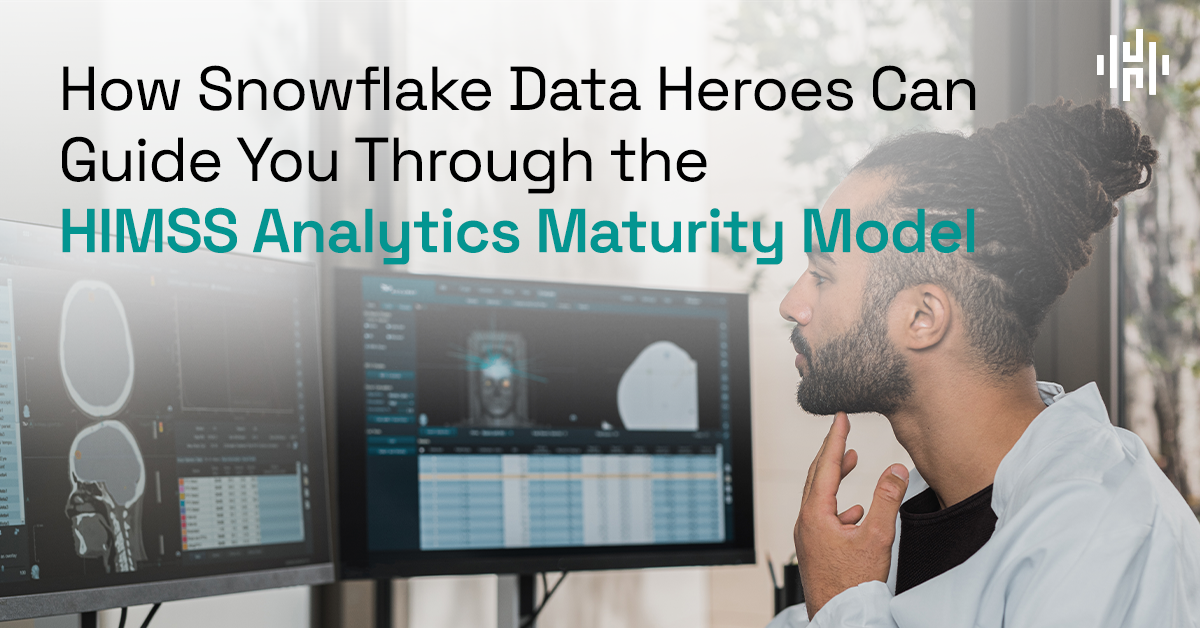In a digital era, organizations sitting on incredible amounts of data often find that thriving depends on their very ability to act upon all their information. The act of leveraging vast volumes of data is valuable not just from a sales perspective, but for every department. Across organizations, unique users are integrating acquired data analysis for applications like improving the customer journey, developing new products, expanding services, and increasing operational efficiency. There’s almost no aspect of a business that can’t be improved by the utilization of collected data, and the best way to make that data actionable is with an analytics maturity model.
However, despite recent advancements in real-time and predictive analytics, most organizations still struggle to build integrated data sources for all users, failing to apply business intelligence to everything from early strategic talks to the measurement of their business efforts. According to Król and Zdonek (2020), “advanced analytics is likely to become a decisive competitive asset in many industries and a core element in companies’ efforts to improve performance.” This is key in industries such as healthcare, where going beyond spreadsheets can have a major impact on patient care.
Fortunately for healthcare providers, the roadmap to data maturity is clearer for healthcare and life sciences (HCLS) than other industries. Despite needing to process vast, complex caches of data, healthcare organizations can rely on clear frameworks for proper architecture, thanks in large part to groups like the Healthcare Information and Management Systems Society (HIMSS). HIMSS provides the HCLS industry with a data roadmap that clearly specifies what it takes for any institution to reach data maturity. In this blog, we’ll take a look at the HIMSS Analytics Maturity Model and identify how a modern data services provider can assist with swift and effective implementation.
But Wait, What’s Data Maturity?
The very concept of data and analytics maturity can be a handful. Quite simply, data maturity refers to an organization that has fully perfected their analytics process, streamlining every step in their data cycle. Prior to the release of the HIMSS mode for analytic maturity, there were a series of proposals that attempted to provide a framework to fully guide health systems through analytics maturity. The 2002 Sander’s Hierarchy of Analytics Needs and the 2013 Healthcare Analytics Adoption Model are two great examples of this. Each proposal has built upon the previous one, tackling the new challenges brought forth by including machine learning and automation.
What makes the HIMSS model different is its ability to take a step back and avoid over-focusing on data. Keeping a balance between data, resources and processes can actually result in more effective and improved care, all while cutting costs and helping the medical staff and doctors decrease burnout.
What the HIMSS Analytics Maturity Model Is All About
In 2015, the Healthcare Information and Management Systems Society (HIMSS), an American not-for-profit organization focused on advising leaders across the health ecosystem on health innovation and digital transformation best practices, saw the need to create a standard model for analytics maturity. Because accurate data is necessary in data-driven health organizations, HIMSS proposal helps institutions build strong analytics frameworks that help patients and medical staff alike.
According to HIMSS’ official website, the Adoption Model for Analytics Maturity (AMAM) is designed “to measure the capabilities your organization has gained from installation of technology and surrounding processes.” Because analytics can substantially improve all aspects of a healthcare institution, knowing in which capabilities does the organization have is key.
The model is divided into eight stages, numbered from zero to seven. At Stage Zero, which is usually the point all organizations begin their analytics journey, they have expressed a need to further develop the insights they already have. Stage One sets the foundation for an analytics strategy that involves documentation, definitions and initial data governance practices.
Stage Two and Stage Three revolve around getting your data house in order by using data warehouses as a formal enterprise resource, aligning all data activities with the data strategy that has been put in place and ensuring data quality is stable, standardized and reliable. Once a data system has been put in place, the organization can begin Stage Four in the AMAM model, which is related to measuring and managing evidence-based care.
The final three stages of the AMAM model refer to how analytics can enhance the quality and provide further understanding around the economics of care. Once the organization matures and expands its use on data, it can incorporate both predictive and prescriptive analytics to provide personalized care. Allowing organizations to deliver customized care at scale offers a unique view into what can come next in the world of medicine.
Each of these phases can have unique applications across an organization, and it’s likely that as you implement the HIMSS analytics maturity model, you’ll find yourself developing multiple stages at once. For example, an organization attempting to formalize stage 4 (Measuring and Managing Evidence-Based Care, Care Visibility and Waste Reduction), could swiftly and simultaneously implement a solution like the ALOHA accelerator. ALOHA, which stands for Appropriate Length of Hospital Admissions, is an easily leveraged tool that helps healthcare organizations improve patient outcomes across an entire population while managing and understanding the economics of care. In the U.S., hospital inpatient care is one-third of all healthcare expenditures, accounting for 35 million stays a year with an average length of stay (LOS) of 4.5 days and a cost $13,600 per day. Consequently, even a small reduction in length of stay can account for millions of dollars in annual savings across a health system. Shorter lengths of stay can also benefit patients, decreasing the risk of hospital-acquired conditions, such as pressure injuries and infections.
With the right tools, advancing through the HIMSS analytics maturity model can be fast and effective. Complement the right tools with a team of experts to guide your organization toward optimal use, and you have a recipe for success.
How Your Snowflake Data Heroes Can Help You Implement the HIMSS Model
Perhaps the most difficult aspect of implementing the HIMSS model for analytics maturity is maintaining security while incorporating unique and challenging data sources. As the world moves further into multi-model data frameworks that support both human users and machine learning, the expectation that healthcare organizations be able to rapidly convert and integrate disparate file types becomes a baseline for effective medical care. Fortunately, there are software and modern services solutions to address these challenges.
Snowflake’s Data Cloud model sprang on to the healthcare scene in 2012 and has since been rapidly adopted across the industry. Snowflake’s healthcare and life sciences cloud capabilities make it possible for healthcare organizations to leverage their data to accelerate discovery and development, deliver better patient outcomes, and optimize operational efficiency.
For providers looking to scale the HIMSS analytics maturity model, technology like Snowflake can be central, effectively moving your organization from stage 0 to stage 2 in one fell swoop. But whether you’re starting in the early phases of developing analytics maturity or you’re well on your way, it’s likely your team will need external expertise from healthcare implementation veterans. For this project, a modern data services provider is key.
Hakkoda’s Healthcare and Life Sciences Expertise with Snowflake
Hakkoda’s team of HCLS experts are 100% SnowPro certified, with extensive experience migrating clients to Snowflake databases and implementing a HIMSS analytics maturity model. As you continue to traverse the stages of the HIMSS model, it’s likely you’ll also need to create a modern technology stack that supports each unique phase of your organization’s optimization. Hakkoda’s team is certified across key technology partner’s software. As a modern data services provider, our team offers guidance, client enablement, and project execution on modern data governance platforms, data transformation vendors, and more. With deep domain expertise in healthcare, Hakkoda’s team complements their expertise with our own suite of unique healthcare accelerators. Whether you need to rapidly incorporate FHIR data, manage population health, or quickly deliver operational cost savings, Hakkoda’s extensive data services team is ready to help.





